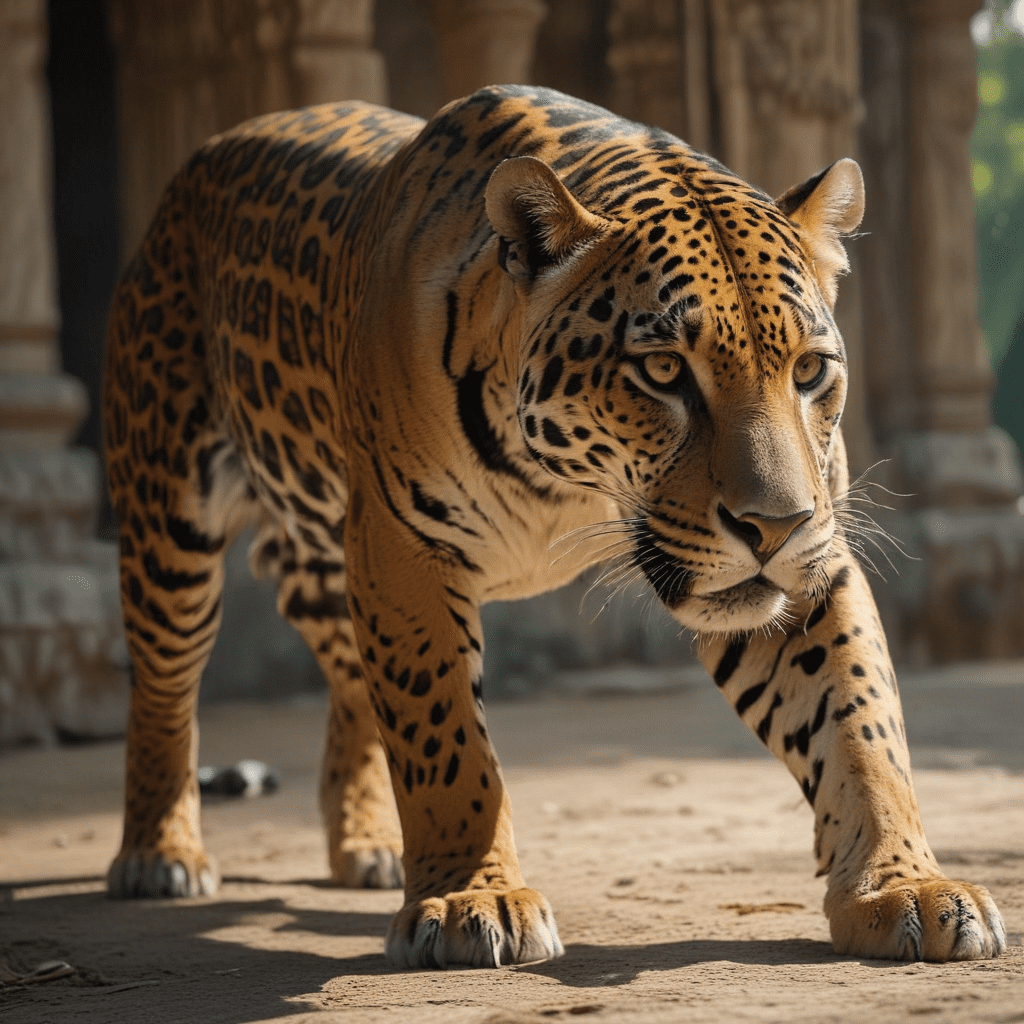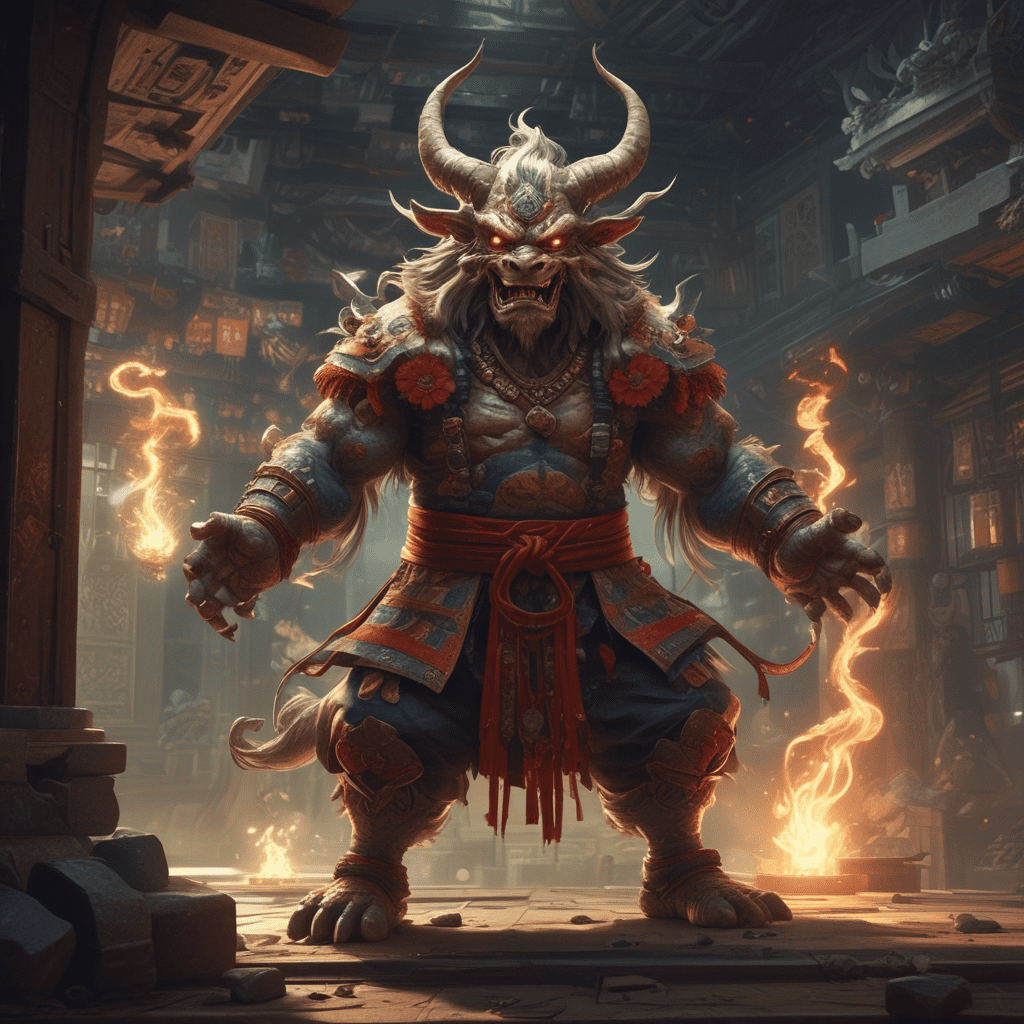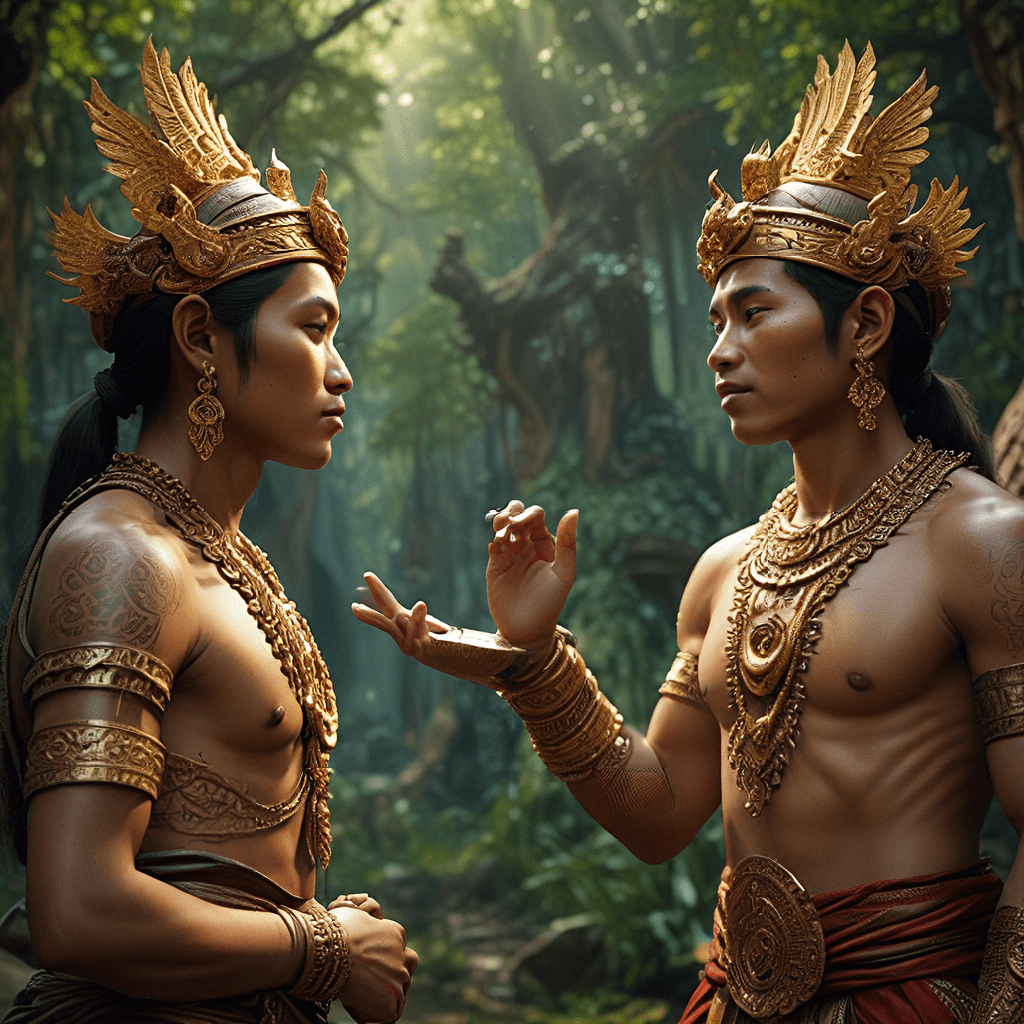I. Introduction
The ancient Maya civilization, renowned for its sophisticated calendar system, intricate hieroglyphic writing, and impressive architecture, held a deep reverence for the jaguar. This majestic feline, with its piercing gaze, powerful physique, and association with the night, captivated the Mayas and became deeply intertwined with their mythology, religion, and art.
The jaguar, known as "balam" in the Mayan language, was considered a sacred animal, embodying power, protection, and the intermediary between the human world and the supernatural realm. Its presence permeated every aspect of Mayan life, from the stories they told to the rituals they practiced. In their mythology, jaguars were often depicted as deities, guardians, and even creators, playing pivotal roles in shaping the world and influencing human destiny.
VI. Archaeological Evidence of the Jaguar
The profound significance of the jaguar in Mayan culture is further underscored by the abundance of archaeological evidence that showcases its prominent role in their society. Throughout the Mayan realm, from the lush jungles of Guatemala to the arid plains of the Yucatán Peninsula, countless artifacts and structures bear witness to the reverence the Mayas held for this magnificent creature.
One of the most striking examples of this archaeological evidence is the abundance of jaguar depictions in Mayan art. Murals, sculptures, and ceramics frequently feature jaguars in various forms, from naturalistic representations to highly stylized motifs. These depictions often adorn the walls of palaces, temples, and tombs, highlighting the jaguar's association with power, rulership, and the afterlife.
The iconic murals of the Bonampak site in Chiapas, Mexico, vividly portray a scene of a Mayan lord dressed in jaguar pelt and performing a ritual dance. This captivating artwork not only showcases the importance of the jaguar in Mayan rituals but also provides valuable insights into the attire and ceremonies associated with elite figures.
Beyond visual representations, the remains of jaguars have been discovered in archaeological contexts, further solidifying their connection to Mayan beliefs and practices. The presence of jaguar bones in tombs and ceremonial offerings suggests that these animals were not merely revered but also played a significant role in the spiritual realm.
VII. The Jaguar in Contemporary Mayan Culture
Despite the passage of centuries and the arrival of new cultural influences, the jaguar continues to hold a profound significance in the lives of contemporary Mayan communities. In many indigenous villages, traditional beliefs and practices that revere the jaguar persist, highlighting the enduring legacy of this revered animal in Mayan culture.
The Maya people of the Lacandon Jungle in Chiapas, Mexico, continue to view the jaguar as a sacred protector, believing that it safeguards their communities from harm and ensures a harmonious relationship with the natural world. They perform rituals and ceremonies to appease the jaguar spirits, seeking their blessings for a bountiful harvest and protection from misfortune.
Furthermore, the jaguar remains a prominent motif in contemporary Mayan art and craftsmanship. Woven textiles, intricate wood carvings, and vibrant paintings often feature stylized representations of the jaguar, showcasing its enduring significance as a cultural symbol.
VIII. The Jaguar's Ecological Significance
Beyond its cultural and spiritual significance, the jaguar plays a vital role in the ecological balance of the Mayan rainforest. As an apex predator, the jaguar helps regulate prey populations, ensuring the health and diversity of the ecosystem. Its presence is crucial for maintaining the delicate balance of the rainforest, a vital habitat that provides sustenance and cultural significance to the Mayan people.
The Mayas, with their deep understanding of the natural world, recognized the jaguar's ecological importance. They believed that the jaguar's presence was essential for maintaining the harmonious balance between humanity and nature. This reverence for the jaguar's ecological role further emphasizes the interconnectedness of Mayan culture, spirituality, and environmental stewardship.
IX. Ethical Considerations and Conservation Efforts
The conservation of jaguars in the modern world presents ethical considerations that demand careful attention. Habitat loss, poaching, and human-wildlife conflict pose significant threats to the survival of these magnificent animals, jeopardizing their ecological role and cultural significance.
Efforts to conserve jaguars require a multifaceted approach that addresses these threats while respecting the cultural beliefs and values of indigenous communities. Collaboration between conservationists, scientists, and local communities is crucial for developing effective strategies that protect jaguars while ensuring the well-being of the people who share their habitat.
X. Conclusion: The Enduring Legacy of the Jaguar
The jaguar, with its captivating presence and profound symbolism, has left an indelible mark on Mayan culture, shaping their mythology, art, and ecological understanding. From its revered status in ancient times to its continued significance in contemporary Mayan communities, the jaguar serves as a powerful reminder of the interconnectedness between humanity, nature, and the spiritual realm.
The enduring legacy of the jaguar in Mayan culture compels us to appreciate its ecological importance, respect the cultural beliefs associated with it, and work towards its conservation, ensuring that this magnificent creature continues to thrive in the rainforests of Central America, inspiring awe and wonder for generations to come.
FAQ
Q: What is the significance of the jaguar in Mayan culture?
A: The jaguar held profound significance in Mayan culture, representing power, protection, and the link between the human world and the supernatural realm. It was revered in mythology, depicted in art, and associated with rulership and rituals.
Q: How did the Mayas view the jaguar's ecological role?
A: The Mayas recognized the jaguar's importance as an apex predator, maintaining the balance of the rainforest ecosystem. They believed its presence was crucial for harmony between humanity and nature.
Q: What are some ethical considerations in jaguar conservation?
A: Ethical considerations include addressing habitat loss, poaching, and human-wildlife conflict while respecting indigenous cultural beliefs and values. Collaboration between conservationists, scientists, and local communities is essential.




